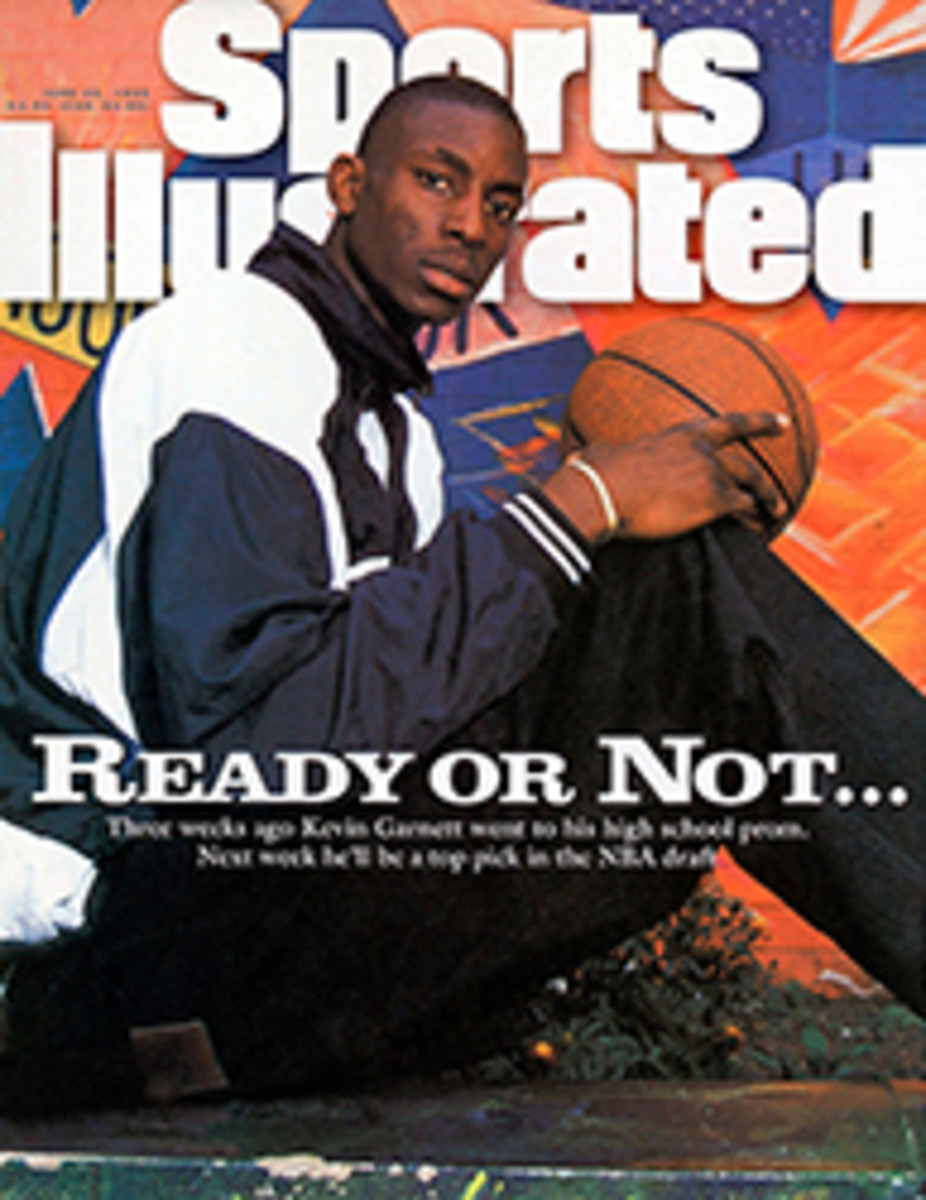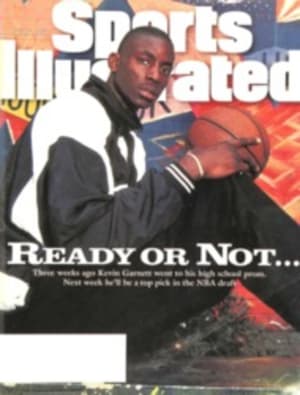
ENOUGH ALREADY WITH 25-PLUS HOURS OF COVERAGE, NBC'S FIRST U.S. OPEN TELECAST SINCE 1965 WAS TOO MUCH OF A GOOD THING
Was that enough television coverage for you? Sort of put the
Super Bowl to shame. NBC gave us six hours of the U.S. Open on
Saturday, six more on Sunday, another 13 on Thursday and Friday
through ESPN, plus a preview, late-night highlights and reruns.
Some marriages don't last that long. On Sunday you could have
flipped on the set, caught an opening feature or two, gone out
and played a round of golf, and returned in time to watch Greg
Norman play his. Long it certainly was. The question is, Was it
good? We'll get to that later.
First, some nitty-gritty. When it was announced on June 1, 1994,
that for the first time in 29 years ABC would not be televising
the U.S. Open, it caused nary a blip on the radar screen of most
people's lives, but within television's sporting industry, it
was a bombshell. What happened? Well, for one thing, NBC offered
more money, always a good idea -- $40 million for a three-year
contract to cover the Open as well as the USGA's other major
events, the Women's Open, the Senior Open and the Amateur. ABC
came in at $33 million. And where was CBS, you might ask? Never
made an offer.
Beyond money, NBC had made an impassioned presentation to USGA
officials, with its golf analyst, Johnny Miller, the 1973 Open
champion, telling the gentlemen in the blue blazers how much the
Open had always meant to him and how wonderful it would be to
cover it. In addition, the USGA had become disenchanted with
ABC, feeling the network had not sufficiently promoted the
tournament. That's one reason you saw so many Open promos during
NBC's telecast of the NBA Finals.
There was a time not that long ago when, in the words of Dick
Ebersol, president of NBC Sports, his network was "a dismal
third" behind the other two. That began to change in 1990 with
the arrival of Miller, whose glory days as a player had ended.
Untutored in the area of television diplomacy, Miller truly told
it like it was, angering some players with his honest but blunt
comments. Over the past five seasons he has learned to pull his
punches ever so slightly, and he is now regarded by all camps as
the best there is.
Two years ago Ebersol promoted Tom Roy, then 34, to executive
producer. Roy had once harbored notions of playing the Tour
himself, but a shoulder injury scuttled that. One of Roy's first
moves in preparation for this year's Open was to hire Dave Marr,
who for 22 years had been ABC's analyst and the best in the
business. In 1991, ABC dropped Marr. "They didn't officially
tell me until two months after I found out," Marr says. By that
time he had hooked on with the BBC in Great Britain, his Texas
accent charming the Brits. He now works for both networks.
But under the system adopted by all three networks, there is no
room in the booth at 18 for two expert analysts, so at
Shinnecock, Marr was at 16. Still, he was delighted to be back
at the Open. "I love the game," he said. "It's all I am."
Two days before the start of the tournament, with rain falling,
Miller did a tour of the course, sometimes getting on his hands
and knees to feel the depth of the rough or pacing off the
precise width of the fairway. "My confidence level in the booth
is directly proportionate to the amount of time I spend studying
the course," Miller says. "I do more of it than anyone else."
On this excursion in the rain Miller dragged along his current
coanchor, Dick Enberg. In his five years at NBC, Miller has
shared the booth with Bryant Gumbel, Charlie Jones and Jim
Lampley, but as the industry saying goes, the chemistry wasn't
right. Cramming like a student for a final exam, Enberg said he
knew comparatively little about golf and just hoped to keep out
of Miller's way.
Thursday morning at 10:30 it was showtime ... on ESPN, that is.
Call it a dress rehearsal for the weekend. NBC's foot soldiers
-- Roger Maltbie, Dan Pohl and John Schroeder, all current or
former touring pros, all wearing ESPN shirts and hats -- were
out in force, covering glamour groupings such as Ernie Els, Nick
Price and Tiger Woods. Reporters Bob Trumpy and Dan Hicks were
in booths at 10 and 13, respectively. In that regard NBC
coverage differs from that of its two rivals. Each network has
an anchor pair at 18, but CBS uses stationary announcers while
ABC has field people. NBC uses both.
At Shinnecock the system worked well. Miller and his field
patrol often carried on a dialogue as if sitting in the same
room. Miller was sharp early. Talking in the booth with Scott
Simpson, who had shot a first-round 67, he pointed out that
Simpson excelled in Opens, winning in 1987 at the Olympic Club
in San Francisco. Miller then said that Simpson probably should
have won again in 1991 at Hazeltine, when he squandered leads
both in regulation and in a playoff to lose to Payne Stewart.
Then a pointed question: Does that hurt? Simpson admitted it did
just a bit.
Enberg made graceful transitions, but his lack of expertise kept
slipping through. For instance, he said that "[Joe] Gullion is
about to make his approach to the green from some deep rough 30
yards away," when indeed it was his approach to the green -- his
second shot -- that had put him in the rough. Wrapping up
Friday's show, he got slick. "Yesterday the Price was right,
today was a Norman conquest." Easy, Dick.
The long weekend's telecast began on an emotional note when
Miller nearly broke down on camera, his voice quivering as he
recalled how his father had instilled in him a great love of the
Open. As with all shows, especially 12 hours worth, there was
good and there was, well, not so good. Let's take the latter:
On Saturday, Roy concentrated almost exclusively on the five or
six leaders, with the result that when several fell back, as so
often happens in the Open, there were players suddenly in
contention whom we had barely seen on camera, most notably the
eventual winner, Corey Pavin. This despite the fact that NBC was
using an unprecedented 35 cameras at Shinnecock.
When NBC did cut to some apparently irrelevant player about to
putt from, say, 30 feet, you could bet he would make it, because
it was on tape. But no one ever said so, or even, "This just a
few seconds ago...."
Minor quibble: Early on, Miller fell in love with "native
fescue," the tall grass beyond the rough. He must have mentioned
it a dozen times in the first half hour. Later he dropped it,
possibly at Roy's suggestion.
To fill time at the start, NBC showed the same features it had
aired in its preview the preceding weekend. Bad deal for ardent
golf fans.
But there were plenty of pluses. The aforementioned features
were good, especially the recap of Shinnecock '86, the shots of
Ray Floyd on the clubhouse porch evoking scenes from The Great
Gatsby.
As a group, the commentators seldom uttered golfing cliches, to
wit: flatstick (putter), stops the bleeding (par or birdie after
a string of bogeys), dance floor (the putting surface) and
center cut (ball down the middle of the fairway or hole).
Indeed, Miller injected the words inordinately and beguiling
into his commentary. Shades of the great Henry Longhurst. He
described one attempt to get out of the deep rough as like
"trying to hit a sack of sand." Perfect.
Best Sunday TV shot: Pavin racing up the 18th fairway to see
where his four-wood approach had landed.
Final report card. Not bad, especially for the first try since
1965. Call it a B plus. But next year, cut it back to five
hours. Roy said NBC needed the revenue from those extra
commercials to pay for the $40 mil. Fine, Tom, but next year
don't take it out on us.
COLOR PHOTO:JOHN BIEVER [NBC cameraman filming the U.S. Open]COLOR PHOTO:BOB MARTIN Producer Roy used a record 35 cameras but didn't focus in on enough of the field on Saturday. [Tom Roy]

